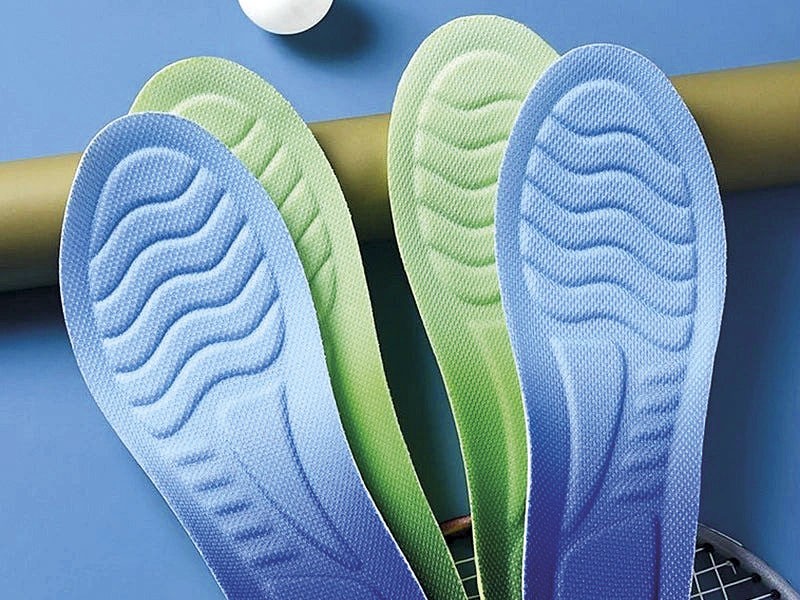


For insole manufacturing, the footwear industry focuses its research on materials that adapt to the shape, temperature, and movement of the user's foot, enhancing comfort and performance. Some examples of smart materials already used in footwear include memory foam, gel, and EVA, which provide shock absorption in various types of products.
Memory foam is a high-density polyurethane material with the ability to return to its original shape. It adapts to pressure and temperature, molding to the foot upon contact, distributing weight evenly, and relieving pressure points. Other materials that may be contained are EVA (ethylene vinyl acetate), antimicrobial additives, and cotton or polyester fabric linings for better breathability and comfort.
ADVANTAGES
Thermosensitive: softens at high temperatures and firms up in cold conditions
Excellent shock absorption
Conforms to the foot shape and relieves pressure points
DISADVANTAGES
May retain heat
Less durable than other materials
May not be suitable for high impact activities
RECOMMENDATIONS
For daily use
For individuals with plantar fasciitis or heel pain

Gel insoles are made from a combination of silicone, polyurethane, and synthetic rubber. These materials offer elasticity, durability, and resistance.
They have a soft, flexible, and adaptable texture and can also be colored and customized to match customer preferences.
ADVANTAGES
• High shock absorption
• Soft and comfortable
• Cool to the touch
DISADVANTAGES
• Deforms over time
• Does not offer support conditions
RECOMMENDATIONS
• For low-impact activities
• For localized pain relief

The main component of EVA insoles is ethylene vinyl acetate, to which other materials can be added to create different densities, allowing for areas with more or less cushioning. Other polymers are often included to modify properties such as wear resistance or better anchoring for adhesion.
ADVANTAGES
• Lightweight and durable
• Good cushioning
• Cost-effective
DISADVANTAGES
• Less adaptive than memory foam
• May not be comfortable for sensitive feet
RECOMMENDATIONS
• Common base material for many insoles
• For moderate-impact sports activities

Participate with your content in SERMA.NET and in our printed edition.
It is the opportunity to reach your customers!
Write us! marketing@serma.net